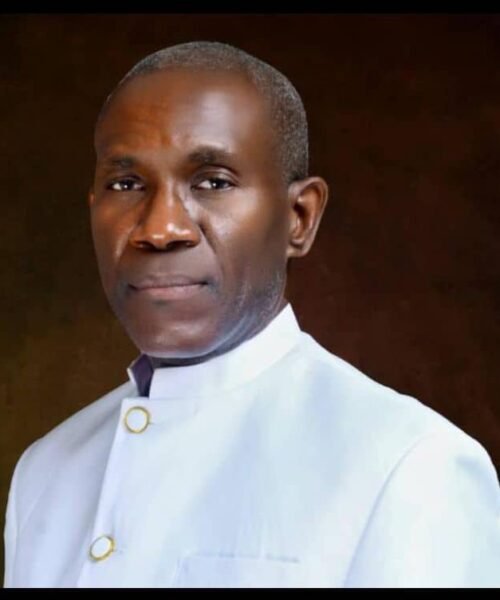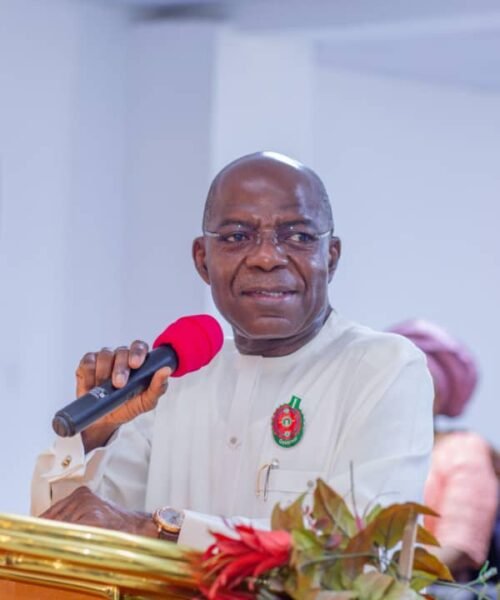The Aba Papers: Anatomy of a Once Forgotten Economic Powerhouse
“The Aba Papers” is a poignant and thought-provoking exploration of this city’s struggles from a human perspective, weaving together the threads of history, policy, and human experience to create a rich tapestry of insight and understanding. Through this collection of essays, we delve into the complexities of Aba’s challenges, seeking not only to diagnose the problems but also to prescribe solutions that can help this city rise from the ashes and reclaim its former glory.
The Crumbling Foundations of Commerce
Aba, Nigeria’s self-proclaimed “Japan of Africa,” presents one of Africa’s most perplexing urban paradoxes. This southeastern Nigerian city generates billions in leather goods, textiles, and machinery annually, yet its infrastructure resembles a war zone. The once-vibrant Port Harcourt Road—strategic artery for automobile parts dealers and electronics markets—lay abandoned for 30 years until Governor Alex Otti’s recent reconstruction . Federal roads connecting Aba to neighboring states have become “death traps” , strangling supply chains despite Abia’s oil-rich Niger Delta status. Importers report losing billions transporting containers from Onne Port through ruined highways, costs inevitably passed to consumers already struggling with 50.2% poverty rates (2009-10) .
Voices from the Rubble


- Emmanuel’s Vigil: Night watchmen like Emmanuel guard markets where traders operate under perpetual floodwaters. At Ariaria International Market—supplier to West and Central Africa—traders literally “swim” through rainy seasons as drainage systems choke on illegal structures . “Customers don’t want to swim,” laments Uche Ojukwu, whose sales plummet annually .
- Nneoma’s Scavenging: Informal recyclers like Nneoma navigate alleys where waste management collapsed decades ago. Aba’s “dustbin economy” remains untapped potential , while hepatitis B outbreaks spread through contaminated water —a direct consequence of environmental neglect.
- Chika’s Stall: Market women face quadruple burdens: poor roads blocking customers, multiple taxation (“environmental fee, warehouse fee, operational fee”), touts extorting “private levies,” and Chinese imports undercutting local production . As Dennis Nnajiofor at Eziukwu Market observes: “Aba is only expanding by destroying old buildings, not developing new areas” .
The Poverty-Infrastructure Nexus: A Vicious Cycle in Aba
Aba, a city once renowned for its vibrant commercial activities, was trapped in a vicious cycle of poverty and infrastructure failures. The city’s road network, a critical component of its infrastructure, lay in shambles. Over 80% of major routes were impassable, and the Port Harcourt Road, a vital artery, was abandoned for 30 years. This led to a decline in economic activities, as buyers from neighboring cities avoided the markets, and residents were landlocked. Importers were forced to pay exorbitant fees, amounting to ₦200,000 extra per container, for crane lifting, further exacerbating the economic woes.
The market structures in Aba were another testament to the city’s infrastructure crisis. The buildings in Ariaria, Ekeoha, and Eziukwu markets were death traps, and flooding was a constant occurrence. Traders were forced to work knee-deep in water, and the unsanitary conditions led to outbreaks of hepatitis B. The economic impact was significant, with sales declining by 40% during the rainy season, and international buyers fleeing the city.
The electricity supply in Aba was also in a dire state. While there was some improvement in the city center, the outskirts remained in darkness. Shoemakers, like Ken Anyanwu, were unable to power their equipment, and industries struggled to compete with Chinese imports. The lack of electricity resulted in a decline in productivity and economic growth.
The housing and sanitation situation in Aba was equally alarming. Over 70% of the city’s housing was unplanned, and drainage was blocked by illegal shops. Homelessness was on the rise, and families, like sisters Alexis and Kay, were forced to live under bridges for years. The healthcare costs associated with these conditions drained incomes, and productivity loss further perpetuated the cycle of poverty.
To break this vicious cycle, Aba needed a comprehensive infrastructure development plan that addressed the city’s pressing needs. The plan had to prioritize the reconstruction of major roads, the rehabilitation of market structures, the expansion of electricity supply, and the provision of affordable housing and sanitation facilities. Only through concerted efforts to address Aba’s infrastructure crisis could the city have hoped to alleviate poverty and unlock its full potential.
Historical Crossroads: From Promise to Abandonment
Aba’s glory days trace to British colonial railways (1916) that positioned it as Eastern Nigeria’s commercial hub . Post-civil war, it became Igboland’s manufacturing heartland—until governance failures triggered decline. Orji Uzor Kalu’s administration (1999-2007) achieved Nigeria’s lowest poverty rate (40.9%) through rural roads, free education, and Enyimba FC’s continental triumphs . His successor Theodore Orji squandered this legacy, leaving “no motorable roads” and “perpetual darkness” . Current Governor Okezie Ikpeazu’s blame-shifting to federal authorities rings hollow when state roads like Faulks Road crumble within two years of construction .
Mental Health: Poverty’s Silent Partner
The psychological toll surfaces in unexpected places:
- Market trader Alphonsus Udeigbo describes pre-Otti Aba as contaminating dwellers with “huge doses of sickness”
- Homeless sisters Alexis and Kay endure seven years under a bridge, with Kay managing bipolar disorder without medication
- Studies show poverty increases anxiety rates by 65% and childhood mental illness by 200-300% —catastrophic for a city where 60% of children live below poverty lines
Governor Alex Otti’s vision for Aba’s redemption is truly commendable. His multi-pronged approach addresses the city’s complex challenges, and it’s exciting to see the potential for transformation.
Firstly, the Market-Led Urban Renewal strategy aims to remodel Ariaria, Ekeoha, and Eziukwu markets to international standards, complemented by business clusters inspired by China’s industrial zones. This approach can revitalize Aba’s economy and make it a hub for commerce and innovation.
The Radical Infrastructure Investment plan, as seen in the Port Harcourt Road reconstruction, has already shown promising results. Replicating this across 15 critical arteries could restore commerce within 36 months, which is a remarkable goal.
Otti’s Pre-Distribution Economics approach focuses on shifting from trickle-down models to base-building strategies. Implementing universal health insurance and an agricultural revolution could have a significant impact. For instance, a ₦3,000/month health scheme for 40 million Nigerians could create an economy comparable to Togo’s, which is a remarkable prospect.
Lastly, the Security & Formalization plan aims to combat multiple taxation, eliminate touts, and enhance policing in expanding suburbs. This approach will help create a safer and more business-friendly environment, which is essential for Aba’s growth.
Overall, Governor Otti’s comprehensive plan has the potential to transform Aba and restore its former glory. His commitment to addressing the city’s challenges is truly commendable, and his efforts deserve recognition and praise.
Aba’s Poverty Timeline: A Story of Decline and Hope
The city of Aba, once a thriving commercial hub, has witnessed a steady decline in its economic fortunes over the past few decades. A closer look at the historical benchmarks reveals a disturbing trend.
The Kalu Era (1999-2007)
During Orji Uzor Kalu’s tenure as governor, Aba experienced a measure of growth, with over 150 roads built and the establishment of the Abia State University Teaching Hospital (ABSUTH). However, despite these infrastructure developments, poverty remained a significant challenge, affecting 40.9% of the population.
The Decline Begins (2009-2010)
In the years that followed, Aba’s economic situation began to deteriorate. Poverty rates soared to 50.2%, and federal roads began to decay. The city’s industries, once the backbone of its economy, started to flee, leaving behind a trail of unemployment and despair.
Prior to May 29th 2023
Fast-forward to 2023, and the situation in Aba had reached crisis point. A staggering 80% of the city’s roads had failed, and markets were frequently flooded. The informal economy has boomed, but this has not translated into meaningful economic growth or poverty reduction.
A New Dawn with Governor Alex Otti
However, with the emergence of Governor Alex Otti, there is a renewed sense of hope for Aba and Abia State as a whole. His administration has announced plans to flag off the construction of Abia Medical City, a $1.3 billion project that will revolutionize medical care in the state. This move is a testament to his commitment to improving the lives of Abia residents.
Otti’s administration is also focused on infrastructural development, with plans to construct 11 rural roads and three agro-logistics hubs. Additionally, he has made offers to buy back the moribund Star Paper Mill, a move that will revitalize the industry and create jobs.
Governor Otti’s leadership and vision for Abia State are commendable, and his efforts deserve recognition and praise. As Aba struggles to come to terms with its declining fortunes, Governor Otti’s administration offers a beacon of hope for a brighter future.
The Unbroken Spirit
Beneath the decay pulses undeniable resilience. Shoemakers maintain global clienteles despite blackouts . Traders reinvent businesses after repeated floods. As Jackie Stanley of Milwaukee—filmed for 34 years in Two American Families—declares: “If I think poverty all the time, I’ll act that way. I can’t afford to let my children see me down” . This ethos permeates Aba’s workshops where artisans whisper: “Enyimba (Elephant) never gets knocked down—it stumbles but rises stronger.”
Aba’s redemption isn’t about aid—it’s about dignity through development. Restoring Port Harcourt Road proves transformation is possible. Now imagine reclaiming all roads, markets, and hope. As Emmanuel the watchman implores: “We may be poor, but we are not invisible”—a call for action in a city waiting to rise from its knees.
Dr Chukwuemeka Ifegwu Eke writes from the University of Abuja Nigeria.







